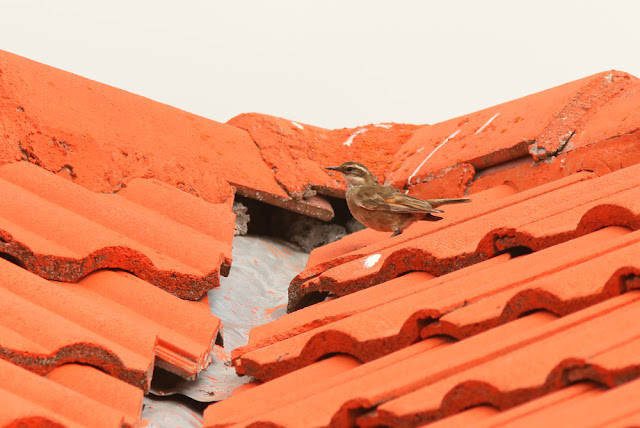Ecuadorian Hillstar is another specialty of the area though..
The male has a blue-purple head setting off a white collar. Our birds were female types. The scenery at the pull-off for them was pretty sweet though.
And a close-up of the chukirawa (spelling?) flowers that the Hillstars favor.
We continued on to the Antisana reserve stopping for a few Paramo Pipits along the way.
Upon reaching the reserve we stopped for a bathroom break. Jose mentioned it could be a good spot for Tawny Antpitta. He was right.
A Many-striped Canestero also left the thicket and wandered out into the open.
A Chestnut-winged Cinclodes felt a defect in the roof of the building was close enough to an open tussock on uneven ground to build a nest.
Here's a pair of the larger Stout-billed Cinclodes at the opening to their nest burrow.
Finally it was time to leave and head for lunch (it was almost 2pm after all), but Jose's sharp eyes spotted another bird perched off the road.
It's an Aplomado Falcon. They've been re-introduced in south Texas, but I've never seen one there (or anywhere else, despite their presence in the bird books for every country I've ever been aside from Canada). While it felt a little odd to start South America in these cool high elevations there were birds everywhere; the cinclodes, sierra-finches, as well as Plain-colored Ground-tyrants were very common. It made sense there'd be a medium sized falcon therefore. "Aplomado" apparently means "poised" or "self-confident" in Spanish. While I hate to anthropomorphize animals as much as the next guy, it seems fairly apropos here.











No comments:
Post a Comment